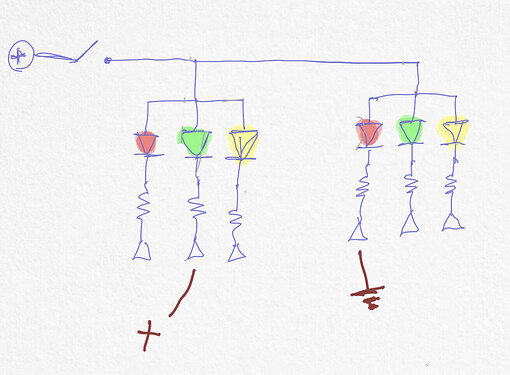I say odd because although I've seen (and made) lotsa LEDs fail, I never have seen this one.
I made a device for a friend, part of which was a little status report board attached to the Arduino on which were mounted two common anode RGB LEDs.
A request to allow making them be off, just off, rather than reporting the status was made.
Lazy I was, I just threw a switch onto the board to cut off the Vcc. That worked well for months.
Now the LEDs would not turn off, was the claim. I had to see the impossible for myself, and I won't tell you how long it took me to find the fault.
Fortunately the status board was detachable. I found that if the green element of one of the LEDs was given HIGH from the Arduino board, other LED elements with LOW were being illuminated, not super bright but annoying, especially since it shouldn't be possible.
I will change the code. A switch on an input and logic to just turn off the LEDs accordianly.
Here's my finger drawn schematic. The little triangles at the bottom go to Arduino outputs, where LOW would turn on the LED on that pin and HIGH would turn it off. If the Vcc switch is closed.
I made a temporary fix that will probably be there as long as this worked in the first place by inserting a regular diode in series with the kinda broken green LED element.
I do not know the name for this mode of failure.
a7
